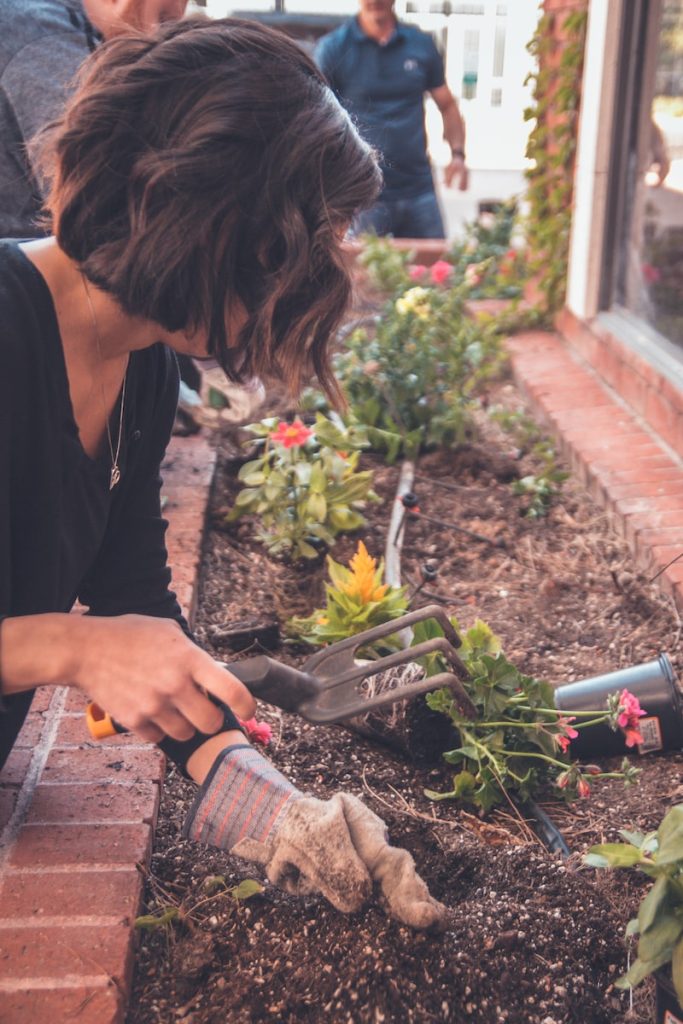Gardening is an enjoyable and rewarding activity that allows you to connect with nature, produce fresh vegetables, and create a beautiful outdoor space. One essential element of gardening is the garden bed, which serves as a home for your plants and provides them with the nutrients and structure they need to thrive. Designing and building the perfect garden bed can seem daunting, but it doesn’t have to be. With the right guidance and tools, you can create a beautiful and functional garden bed that will enhance your garden and provide you with a bountiful harvest. In this blog, we’ll explore the essential elements of designing and building the perfect garden bed, from choosing the right location to selecting the best materials and techniques for construction. Whether you’re a seasoned gardener or a beginner, this guide will help you create a garden bed that will provide you with years of enjoyment and success.
Benefits of Garden Beds
Garden beds are a popular method of growing plants, and for a good reason. They offer numerous benefits that make gardening easier, more efficient, and more enjoyable. Here are some of the benefits of garden beds:
- Improved Soil Quality: Garden beds allow you to create the ideal growing environment for your plants. By filling the bed with high-quality soil and compost, you can ensure that your plants have the nutrients they need to thrive.
- Better Drainage: Garden beds are typically raised off the ground, which allows for better drainage. This means that your plants are less likely to suffer from waterlogging or root rot, which can be caused by poor drainage.
- Weed Control: Garden beds make it easier to control weeds. By keeping your plants in a contained area, you can more easily remove any unwanted weeds without damaging your crops.
- Pest Control: Garden beds can also help with pest control. By keeping your plants off the ground, you can reduce the likelihood of pests such as slugs and snails damaging your crops.
- Increased Yield: Because garden beds offer better soil quality, drainage, and pest control, they can lead to higher crop yields. This means that you can grow more vegetables and fruits in less space, which is especially beneficial for those with limited garden space.
- Aesthetically Pleasing: Garden beds can also be aesthetically pleasing. Choosing the right materials and designs can create a beautiful garden that enhances your outdoor space.
Overall, garden beds offer numerous benefits that make gardening easier, more efficient, and more enjoyable. Whether you’re a seasoned or beginner, incorporating garden beds into your gardening routine is a smart choice.
Design Considerations
Designing a garden bed can be exciting, but it’s important to consider a few key factors before getting started. By taking these design considerations into account, you can create a garden bed that is both functional and aesthetically pleasing. Here are some design considerations to keep in mind:
- Location: The location of your garden bed is crucial to its success. Consider factors such as sunlight exposure, soil quality, and accessibility when choosing a spot for your garden bed.
- Size: The size of your garden bed should be based on your gardening needs and the available space in your yard. A larger garden bed may be better if you have a lot of space and want to grow various crops, while a smaller bed may be more suitable if you have limited space.
- Shape: Garden beds come in various shapes, including rectangular, square, circular, and even irregular shapes. The shape of your garden bed should complement the overall design of your outdoor space.
- Materials: There are many materials to choose from when building a garden bed, including wood, stone, concrete, and brick. Consider the aesthetic appeal, durability, and cost of different materials before making a decision.
- Drainage: Proper drainage is essential for the health of your plants. Ensure your garden bed has adequate drainage to prevent waterlogging and root rot.
- Maintenance: Consider the amount of maintenance your garden bed will require. Will you need to water it frequently, add fertilizer, or remove weeds? Choose a design that suits your gardening style and level of commitment.
By taking these design considerations into account, you can create a garden bed that is both functional and visually appealing. Remember to consider your gardening needs, available space, and personal style when designing your garden bed. With the right design, your garden bed will be a source of pride and enjoyment for years to come.
Preparing the Site
Before you can start building your garden bed, preparing the site properly is essential. By preparing the site, you can create a solid foundation for your garden bed, ensuring its success. Here are some steps to follow when preparing the site for your garden bed:
- Clear the Area: Start by clearing the area where you want to build your garden bed. Remove any grass, weeds, or debris from the site. Use a garden fork to loosen the soil and remove any rocks or other obstructions.
- Choose the Location: Choose a location that receives adequate sunlight for the types of plants you plan to grow. Make sure the location has good drainage to prevent waterlogging and root rot.
- Measure the Space: Measure the space where you want to build your garden bed. Determine the size and shape of your bed based on your gardening needs and the available space.
- Mark the Area: Use stakes or string to mark the boundaries of your garden bed. This will help you visualize the space and ensure that you build your garden bed in the right location.
- Level the Ground: Use a rake to level the ground within the boundaries of your garden bed. Ensure the ground is level and flat to ensure a stable foundation for your garden bed.
- Add Compost: Add a layer of compost to the soil within the boundaries of your garden bed. This will help improve the soil quality and give your plants the nutrients they need to thrive.
- Water the Area: Water the area thoroughly to ensure that the soil is moist and ready for planting.
Following these steps, you can prepare the site for your garden bed and create a solid foundation for your plants to grow. Taking the time to prepare the site properly will ensure that your garden bed is successful and will provide you with a bountiful harvest for years to come.
Building Materials

Choosing the right materials for your garden bed is essential to its success. The materials you choose will affect your garden bed’s durability, aesthetics, and functionality. Here are some common materials used for building garden beds:
- Wood: Wood is a popular choice for garden beds because it’s easy to work with and looks natural. Cedar and redwood are both naturally rot-resistant and can last for many years without needing to be treated. However, treated lumber may contain chemicals that can leach into the soil, so using untreated wood or a food-safe sealant is important if you plan to grow edible plants in your garden bed.
- Concrete: Concrete blocks or poured concrete can be used to create a durable, long-lasting garden bed. Concrete is also fire-resistant, which can be important in areas prone to wildfires. However, concrete can be expensive and less visually appealing than other materials.
- Stone: Stone is a beautiful and durable option for garden beds. It can be used to create a rustic or formal look, depending on the type of stone used. However, stone can be heavy and difficult to work with and may require professional installation.
- Brick: Brick is another durable option for garden beds. It can be used to create a formal or classic look and is relatively easy to work with. However, brick can be expensive and less visually appealing than other materials.
- Metal: Metal garden beds are becoming increasingly popular due to their durability and modern look. They can be made from materials such as galvanized or corten steel and last for many years. However, metal can be expensive and may not be suitable for all gardening needs.
When choosing the materials for your garden bed, consider your budget, gardening needs, and personal style. Each material has its pros and cons, so it’s important to choose the one that is best for you. With the right materials, your garden bed can be functional and visually appealing, providing a bountiful harvest for years.
Maintenance and Care
Maintaining and caring for your garden bed is essential to keep your plants healthy and productive. Here are some tips to help you care for your garden bed:
- Watering: Water your plants regularly, especially during hot and dry periods. Make sure to water deeply to encourage healthy root growth. Avoid over-watering, which can lead to root rot and other problems.
- Weeding: Keep your garden bed free from weeds, which can compete with your plants for nutrients and water. Remove weeds by hand or use a hoe or cultivator to loosen the soil and uproot them.
- Mulching: Mulch your garden bed with organic material, such as straw, leaves, or grass clippings. Mulch helps retain moisture, suppress weeds, and add nutrients to the soil as it decomposes.
- Fertilizing: Fertilize your plants regularly to provide them with the nutrients they need to grow and produce. Use a balanced fertilizer or one that is specific to the type of plants you are growing.
- Pruning: Prune your plants as needed to encourage healthy growth and remove dead or diseased branches. Pruning can also help control the size and shape of your plants.
- Pest and Disease Control: Monitor your plants for pests and diseases and take appropriate action to control them. This may include using organic pesticides, removing infected plants, or rotating crops.
- Soil Testing: Test your soil periodically to determine its pH level and nutrient content. This can help you adjust your fertilization and watering practices to ensure healthy plant growth.
Regular maintenance and care will ensure you enjoy a bountiful harvest for years.
Conclusion
Designing and building a garden bed can be a fun and rewarding project that allows you to enjoy fresh produce or beautiful flowers right in your own backyard. Whether you choose to use wood, concrete, stone, brick, or metal, selecting suitable materials and preparing the site properly are crucial for a successful garden bed. Once your garden bed is in place, regular maintenance and care, including watering, weeding, mulching, fertilizing, pruning, and pest and disease control will help ensure healthy plant growth and a bountiful harvest. By following these tips and putting in the necessary effort, you can create a beautiful and productive garden bed that will provide you joy and sustenance for years.






























